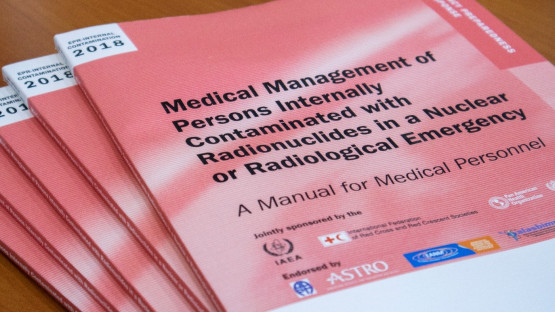A new IAEA publication guides medical personnel on the treatment of persons who could have internal contamination with radionuclides.
The publication, Medical Management of Persons Internally Contaminated with Radionuclides in a Nuclear or Radiological Emergency (EPR-Internal Contamination), targets medical personnel ranging from first responders to medical practitioners and hospital staff. The publication guides users through screening, monitoring the patient, taking biological samples and defining appropriate treatments.
Internal contamination occurs when radionuclides are inhaled, ingested, or absorbed through the skin or an open wound. As such internal contamination usually does not induce immediate symptoms, diagnosis can be difficult. The new publication advises on procedures to conduct dose assessments, determine the specific type and amount of radionuclides involved, and determine suitable therapies.
“In radiation emergencies, the first priorities are conventional medical evaluation and stabilization of patients,” said Eduardo Herrera Reyes, a Medical Emergency Preparedness Specialist at the IAEA. “This publication provides practical information to help guide medical staff in taking decisions on monitoring and decontamination of patients. It is also useful for decision-makers in charge of planning the general and medical response to radiation emergencies.”
EPR-Internal Contamination is co-sponsored by the International Federation of Red Cross and Red Crescent Societies and the Pan American Health Organization. It is endorsed by the American Association of Physicists in in Medicine, the American Society for Radiation Oncology , the European Association of Nuclear Medicine , the Latin American Association of Societies of Nuclear Medicine and Biology and the Society of Nuclear Medicine and Molecular Imaging.
This publication is part of the IAEA’s Emergency Preparedness and Response Series, which aims to assist Member States in implementing IAEA safety standards on emergency preparedness and response.




